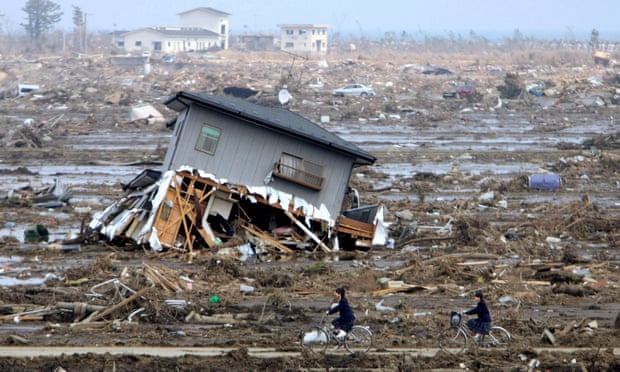For almost 10 years, the clock hanging in Bunshun Sakano’s temple was a reminder of the day nature’s force came close to destroying his community.
The clock, which is thought to be about 100 years old, stopped ticking after the north-east coast of Japan was struck by an earthquake and tsunami that killed more than 18,000 people on 11 March 2011.
Fumonji temple, which lies a few hundred metres from the tsunami-hit coast in Yamamoto, a town in Miyagi prefecture, was hit by the waves, with only its pillars and roof spared by the deluge.
Sakano rescued the clock, cleaned it and wound the spring, but its hands refused to budge.
Then late on 13 February this year – just weeks before the 10th anniversary of the disaster – the same region was struck by another powerful earthquake, described by seismologists as an aftershock of the March 2011 quake.
The following morning Sakano, the Buddhist temple’s head priest, went to check the main hall for any damage when he heard a ticking sound. The clock, which had remained silent even after being repeatedly cleaned, was moving again.
Two months later, it is still ticking.
“Maybe it’s pushing me to move forward with new determination,” Sakano, 58, told the Mainichi Shimbun newspaper. “It’s like a sign of encouragement that the real restoration is yet to come.”
The clock, which Sakano had bought at an antique shop in neighbouring Fukushima prefecture several years before the 2011 disaster, appears to have been shaken back into action by the force of February’s earthquake.
A representative of Seiko, the clock’s manufacturer, told the Mainichi: “It’s possible that the pendulum, which had stopped, started moving again with the shaking of the earthquake, or that dust that had built up inside came loose.”
The clock was a silent source of inspiration for Sakano as he set about helping the local community in the aftermath of the tsunami, bringing together volunteers and, a year later, opening a cafe for people whose homes had been destroyed.
Recently, with neighbourhood meetings and volunteering put on hold by the coronavirus pandemic, Sakano had started to wonder if the time had come to end his community activities.
But when the clock started ticking again, he said, it was as if it was imploring him not to give up and to “start moving again”.






